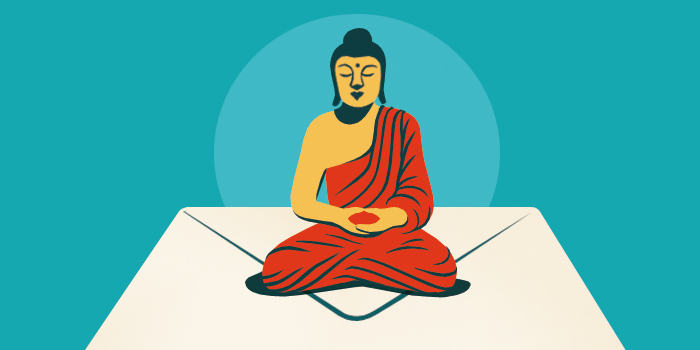What are the different schools of Tibetan Buddhism?
Scholars often divide the Tibetan Buddhist traditions into two main groups: Nyingma (older schools) and Sarma (newer schools). Nyingma refers to the traditions dating back to the earliest days of Buddhism in Tibet—specifically the teachings attributed to the 8th-century Indian tantra master Padmasambhava—revered as Guru Rinpoche—and his disciples. Sarma refers to the schools that arose during a second period of widespread Buddhist expansion following the death of King Langdarma (799–842 CE), who, legend says, persecuted Buddhists during his reign.
The Nyingma (“Ancient Ones”) tradition traces itself back to the earliest form of Buddhism in Tibet, and it is thus the oldest of the four major Tibetan Buddhist schools existing today. Modern historians hold that Tibetan Buddhism in the early period was not identified as “Nyingma” until some centuries later, when other, competing traditions arose. The Nyingma school emphasizes the practices taught by Padmasambhava, including the method for deep meditative insight called Dzogchen (Great Perfection). Nyingma practitioners also acknowledge a category of teachings called terma (treasure). They believe that Padmasambhava hid these teachings—in nature, in texts, in the mind stream of high lamas—to protect them for future generations and that Buddhist masters known as tertons (treasure revealers) would recover them centuries later.
The Kagyu (“Oral Tradition”) school traces its lineage back to the 11th-century Indian master Tilopa and his disciple Naropa. Tilopa was a tantric yogi known for a system of teachings on the nature of the mind called Mahamudra (Great Seal), which, according to legend, he received directly from the Buddha Vajradhara, an incarnation of the Buddha as a tantric deity. Naropa passed these teachings to the Tibetan translator Marpa, who taught them to the celebrated yogi Milarepa. A saint-like figure to the Tibetans, Milarepa transmitted the teachings to the 12th-century master Gampopa, and from Gampopa descend a number of distinct lineages—most surviving to this day—that are collected under the rubric of the “Dagpo Kagyu.” Many secondary branches of the Dagpo lineage emerged, but the main ones today, along with the Dagpo, are the Karma Kagyu, Drikung Kagyu, and Drukpa.
The Sakya (“Pale Earth”) school takes its name from Sakya Monastery, founded in the 11th century by Khon Konchog Gyalpo, a disciple of the Tibetan master Drogmi Lotsawa, a translator who had studied in India under Naropa and many other great masters. A member of the Khon family has headed the Sakya school in an unbroken line since then to the present day. The school is especially known for its main system of practice, Lamdre (Path and Its Result), which includes mantra practices and related teachings that trace their heritage back to the great Indian yogi Virupa. Sakya scholars such as Sakya pandita Kunga Gyaltsen (12th-13th century) and Goram Sonam Senge (15th century) have had a significant impact on Tibetan Buddhist philosophy.
Probably the most famous Buddhist figure today, His Holiness the 14th Dalai Lama, is the most prominent figure in the Gelug school, the youngest of the major Tibetan traditions. The meditation master and scholar Je Tsongkhapa established the Gelug school in the 15th century. He combined the 11th-century Indian master Atisha’s teachings on Lamrim (the Graded Path) with the 7th-century Indian master Chandrakirti’s Madhyamaka (Great Middle Way) teachings. The result was a new lineage that emphasizes philosophical analysis and monastic discipline alongside tantric practice.
All of these Tibetan schools, along with many sub-lineages, have survived to the 21st century.
The Tibetan Buddhist schools differ on specific points of philosophy and practice, and these differences, alongside socio-political pressures, resulted in periods of widespread sectarian violence in Tibet. Since the Tibetan diaspora began in 1959, leaders of the different Tibetan Buddhist schools have worked to establish good relationships among spiritual practitioners in the exile community and around the world.

Tricycle is more than a magazine
Gain access to the best in sprititual film, our growing collection of e-books, and monthly talks, plus our 25-year archive
Subscribe now